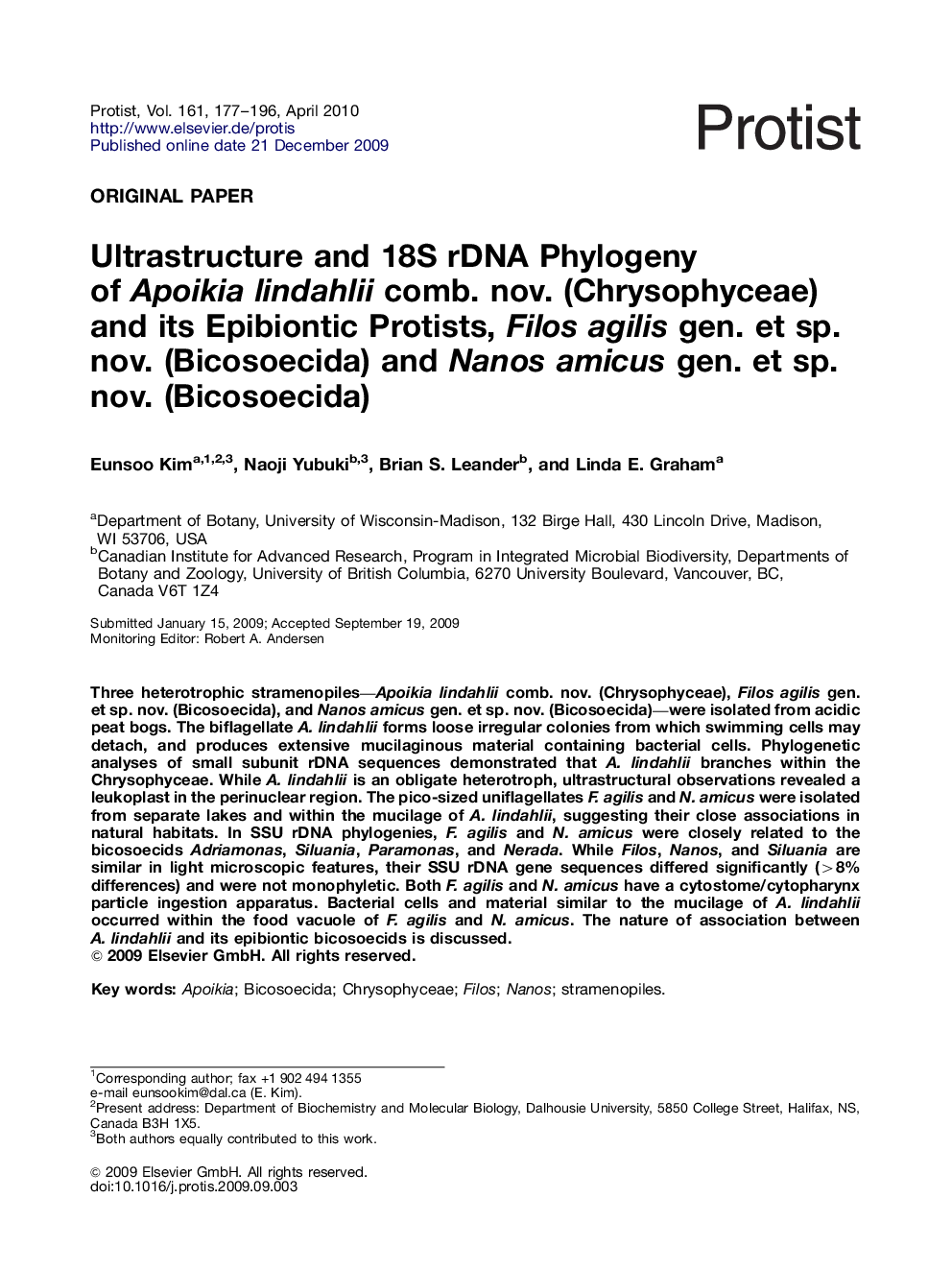| Article ID | Journal | Published Year | Pages | File Type |
|---|---|---|---|---|
| 2061832 | Protist | 2010 | 20 Pages |
Three heterotrophic stramenopiles—Apoikia lindahlii comb. nov. (Chrysophyceae), Filos agilis gen. et sp. nov. (Bicosoecida), and Nanos amicus gen. et sp. nov. (Bicosoecida)—were isolated from acidic peat bogs. The biflagellate A. lindahlii forms loose irregular colonies from which swimming cells may detach, and produces extensive mucilaginous material containing bacterial cells. Phylogenetic analyses of small subunit rDNA sequences demonstrated that A. lindahlii branches within the Chrysophyceae. While A. lindahlii is an obligate heterotroph, ultrastructural observations revealed a leukoplast in the perinuclear region. The pico-sized uniflagellates F. agilis and N. amicus were isolated from separate lakes and within the mucilage of A. lindahlii, suggesting their close associations in natural habitats. In SSU rDNA phylogenies, F. agilis and N. amicus were closely related to the bicosoecids Adriamonas, Siluania, Paramonas, and Nerada. While Filos, Nanos, and Siluania are similar in light microscopic features, their SSU rDNA gene sequences differed significantly (>8% differences) and were not monophyletic. Both F. agilis and N. amicus have a cytostome/cytopharynx particle ingestion apparatus. Bacterial cells and material similar to the mucilage of A. lindahlii occurred within the food vacuole of F. agilis and N. amicus. The nature of association between A. lindahlii and its epibiontic bicosoecids is discussed.
